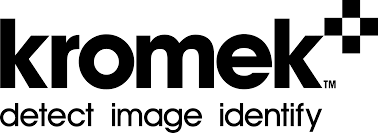With the chance of another nuclear accident, a dirty bomb or even a deliberate nuclear detonation increasing, the ability to cheaply and easily measure environmental radiation is becoming more important by the day.
Vincent Tang is the head of a team at DARPA that has been working to counteract nuclear terrorism for five years. Their project is referred to as Sigma. A year ago, the Tang team started Sigma+ which is an expanded system able to identify chemical, biological and nuclear weapons materials in addition to explosives. The ultimate goal of the Sigma+ project is the creation of a small inexpensive device that can detect all these threatening materials.
There has recently been a major breakthrough on for the Sigma+ project. The British company Kromek has just released the D3S which is a cheap gadget that can fit in a pocket. Unlike previous systems which were expensive and bulky, the D3S is small enough, cheap enough and simple enough to be carried and used by every police officer, firefighter, EMT and any other emergency-service personnel in a city.
When combined with a network of larger and more sensitive devices which are both mobile and at fixed places around a city, such a crowdsourced system could be used to prevent or track a chemical, biological, explosive or nuclear attack. Such Sigma+ systems are being tested in several major urban centers around the U.S. The names of the test cities have not been shared due to security concerns.
The DS3 is about the size of a cell phone, just a little thicker. It contains a one-inch cube of thallium-activated cesium crystal. When a particular isotope hits the crystal, it is absorbed, and the crystal emits a photon. The photon is converted into an electromagnetic signal that is read by the electronics in the DS3.
The DS3 can be easily paired with any cell phone via blue tooth. When the DS3 detects one of the dangerous substances, it alerts the user with a vibration of the phone. The phone displays which substance has been detected and how much is present.
With special software installed on a common laptop, the DS3 will pop up on a map of the area it is operating in. A bunch of DS3s can be tracked on the same map which would allow police and first responders to track the spread of dangerous substances.
The DS3 has been successfully tested with small amounts of Cobalt-60, cesium-137, and radium-226. In testing, the DS3 also reacted to fluorine-18, a common isotope used for medical testing. This is called a false positive and shows that there is still more work to be done on the DS3 design.
Beyond its use by police and first-responders, the small size and low cost of the DS3 means that it could ultimately be distributed to citizens. This could be very useful as a first line of warning for the distribution of a dangerous substance. It could also help authorities obtain very detailed information about such an event.
